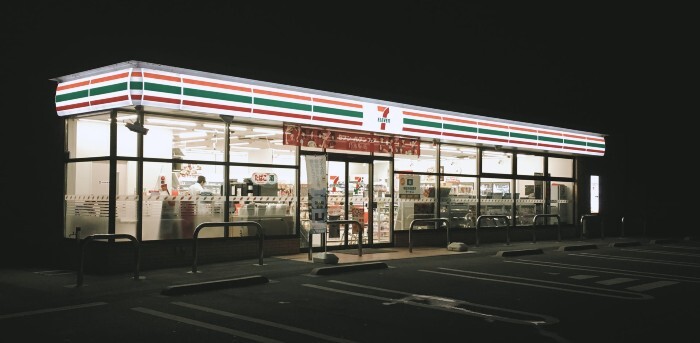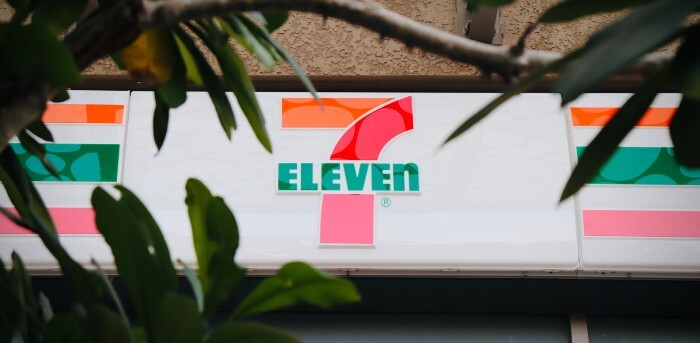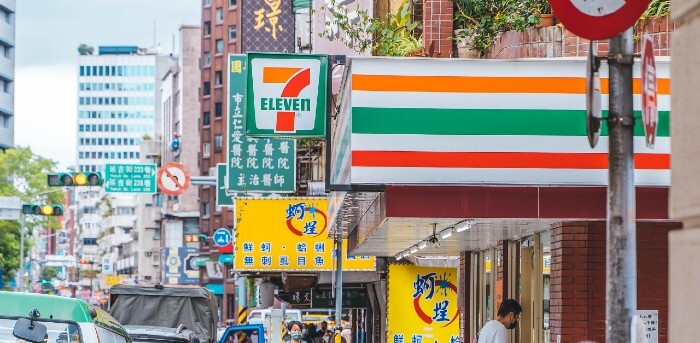From Totem Poles to Wine Empire: The Complete History of 7-Eleven

These days, we really take the freedom to walk two blocks in our bathrobes to pick up a case of beer, some deep-fried macaroni and cheese nachos, and a subsequent extremely necessary roll of toilet paper at 1:39 in the morning for granted. Convenience stores weren’t a thing before 7-Eleven, but thanks to their decades of innovation, we can be as lazy as we wanna be.
They Began as Ice Stations

The first location of the company that would become known as 7-Eleven, then called the Southland Ice Station, opened in Texas in 1927. As the name suggests, it was just an ice station, which sounds like an unprofitable business these days, but domestic refrigerators were barely a thing and much less a thing your average family owned, so those coolers at the back of the store were once the whole business.
They Invented Convenience Stores

The same year, an ice station employee who was apparently called “Uncle Johnny” by people who were not his nieces or nephews suggested to Southland executives that they should sell basic food staples and cigarettes, since their stores were open at times grocery stores weren’t. It turned out plenty of people needed smokes on Sunday nights, so that weird uncle’s idea soon became their primary business model.
Tote’m Stores
As “Southland Ice Station” became an increasingly inaccurate name, one manager promoted her store by installing a souvenir totem pole out front, prompting the company to do the same at all of their stores, which were renamed “Tote’m Stores” because customers “toted” items away from them. Yes, that’s just a store, but who can resist a deeply problematic pun?
The Seven Cents Bond

The Tote’m Stores had the misfortune of opening right at the beginning of the Great Depression, which left them on the brink of bankruptcy until a prominent local banker helped them reorder their finances, which included selling bonds for seven cents on the dollar, proving they can turn anything into a gimmick. Okay, they weren’t called 7-Eleven back then, so it wasn’t quite as clever, and what really turned things around for the company was the repeal of Prohibition, which meant they could start selling beer.
From 7 to Eleven
In 1946, the company decided to extend their hours even further and possibly started to realize how troubling their name was, so they renamed the stores 7-Eleven because they were open from seven in the morning until 11 at night. It’s a good thing more businesses aren’t named like that, or you’d never know which 10-10 your friend wanted to hit up.
More Like 24-Seven

Fewer than 20 years later, however, their hours changed again after a bunch of University of Texas students rushed their local 7-Eleven after a football game, forcing the store to stay open late. The late-night sales were so huge that the company decided to keep every store open 24 hours a day, but they’d really burned themselves out on name ideas, so they kept “7-Eleven.”
The Invention of Slurpees (By Not Them)

Slurpees are the company’s flagship exclusive, the cornerstone of any good 7-Eleven run, but they were invented by a Kansas City Dairy Queen owner in the late ‘50s. He called them ICEEs, which is what they’re still called everywhere that isn’t a 7-Eleven because the company just licensed his machine, renamed them, and pretended it was their idea all along.
Why the Lowercase “N”?

The 7-Eleven logo has remained remarkably consistent since its final renaming, with one major exception: the lowercase “n.” The thorn in the side of every typographer was implemented in 1969, possibly after the founder’s wife suggested the all-capslock logo felt aggressive, especially the “N.” Rather than lowering everything, which would have messed up the vertical alignment, they only changed the “N,” messing up our heads instead.
The Oklahoma Exception
If you ever made a 7-Eleven stop in Oklahoma on a road trip through the boring middle parts of the country, you might have worried that you drove through a wormhole. There wouldn’t have been any Big Bites or Slurpees, only “Icy Drinks” and “7th Heaven” bakery products. That’s because, from 1953 until just recently, 7-Eleven stores in Oklahoma were all independently operated. Sadly, the corporation bought them back in 2020, putting an end to out-of-state freakouts forever.
Taking a Big Bite Out of Oscar Mayer

In 1988, 7-Eleven began selling their Big Bite hot dogs as part of a collab with Oscar Mayer, who concocted a “special spice formulation” for the exclusive brand, but otherwise, the company’s instructions for differentiating themselves in the sausage market boiled down to “make ‘em real big.” It definitely worked: 7-Eleven is now the number-one source of fresh grilled hot dogs in North America.
Why Asian 7-Elevens Are So Much Better

When 7-Eleven started expanding internationally in the ‘70s, they initially struggled with Asian consumers, who found their prices too high and selection too skimpy. As a result, 7-Elevens in Taiwan started offering way more stuff, including a much wider variety of fresh food, until 7-Elevens all over Asia started resembling the tiny shopping malls they do today. The only reason we don’t have more here is that we don’t demand it. It’s a real lesson in knowing your worth.
They Claim They Coined “Brain Freeze”

Although it’s been used in reference to the ice-stabby sensation since at least 1991, 7-Eleven claims to have coined the term “brain freeze” in 1994 to describe what happens when you drink a Slurpee too fast. They even trademarked the drink name “BrainFreeze” because they remain terrible at naming things (thankfully stopping short of calling their hot dogs “EmptyBowels”).
The Trouble With Slurpee Day
In 2002, 7-Eleven started offering free Slurpees on July 11, which is great for Americans but confusing for countries that use a day/month/year date format and also less appealing to the southern hemisphere, where July is the middle of winter. That’s why, in Australia, Slurpee Day falls on November 7.
The Gulpening
In 2012, following decades of ever Bigger Gulps, 7-Eleven quietly changed the size of the Double Gulp from 64 oz. to 50 oz. Many believed it was because of local ordinances limiting the sizes of soft drinks, but 7-Eleven insists it was because they’d gotten too big for the average car’s cupholder.
They Have a Wine Empire

In the mid 2000s, 7-Eleven entered the wine business, and by 2021, they had five different private labels. About their first brand, one executive said, “Our Thousand Oaks brand has gained a loyal following among the under $10 wine consumer,” showing that they really know what their demographic is.
Top image: Duy Nguyen/Unsplash